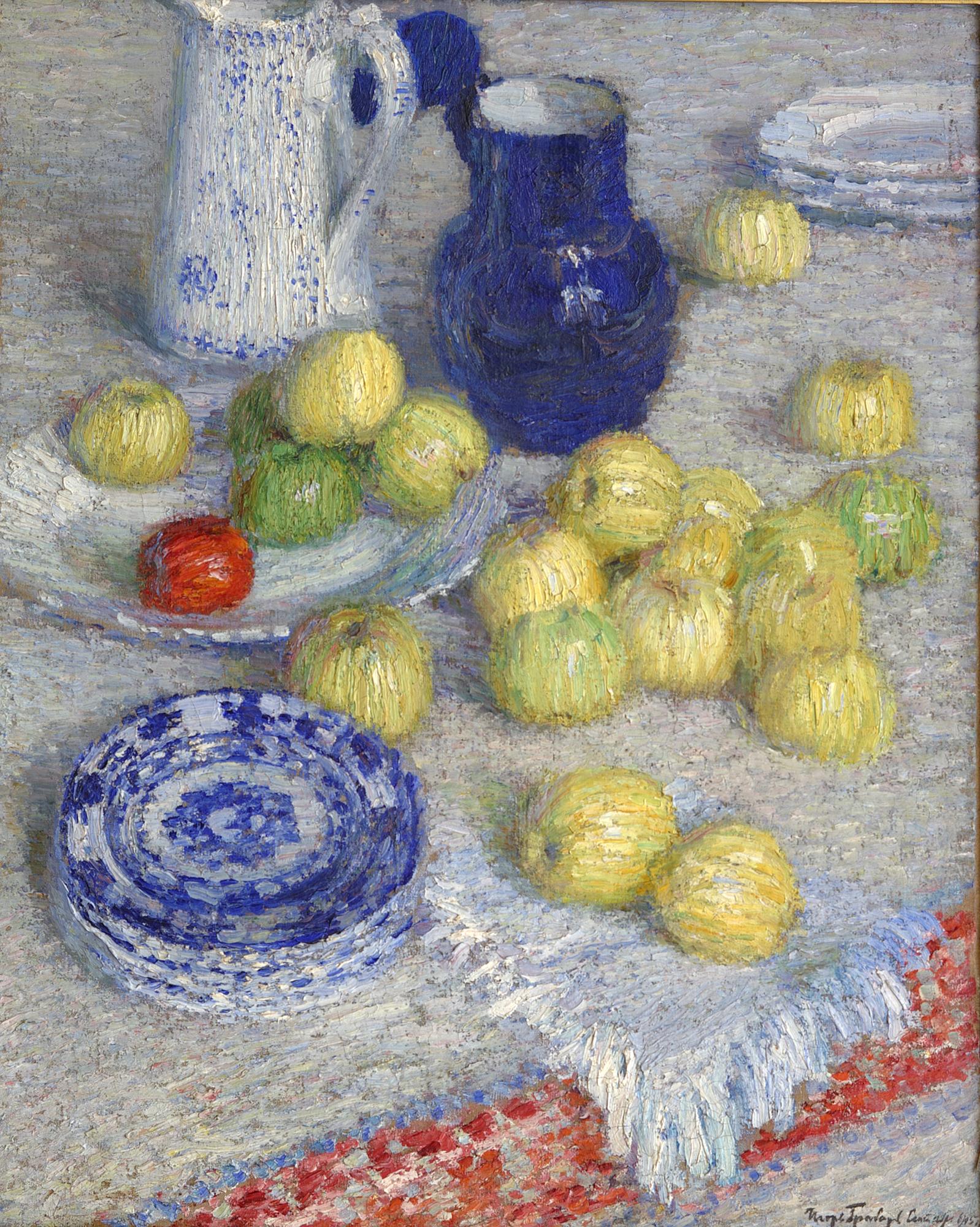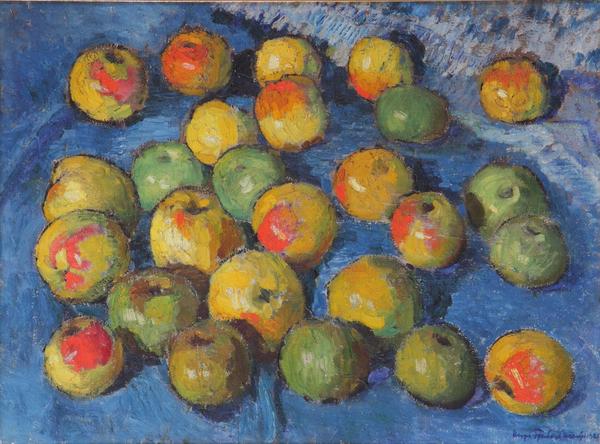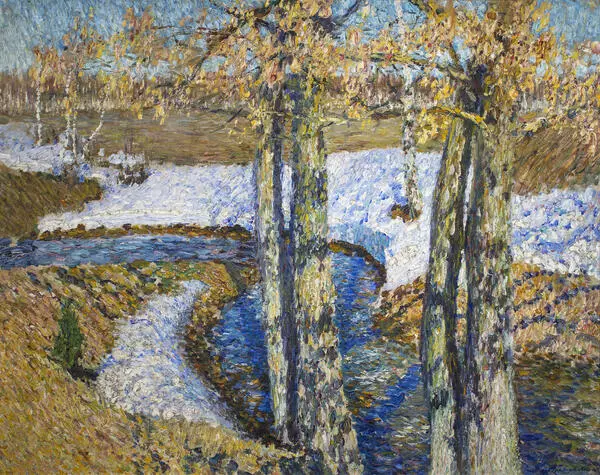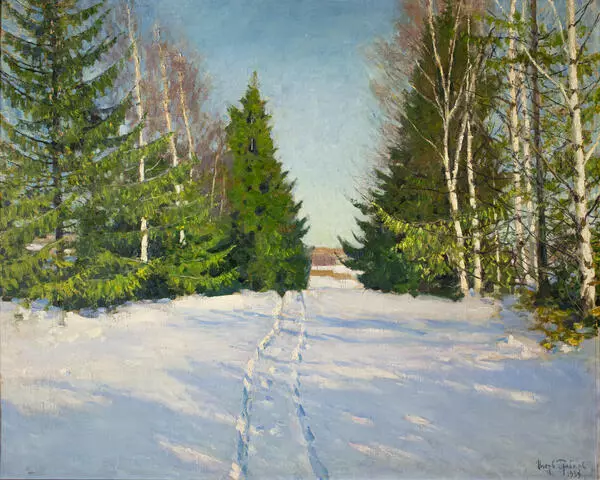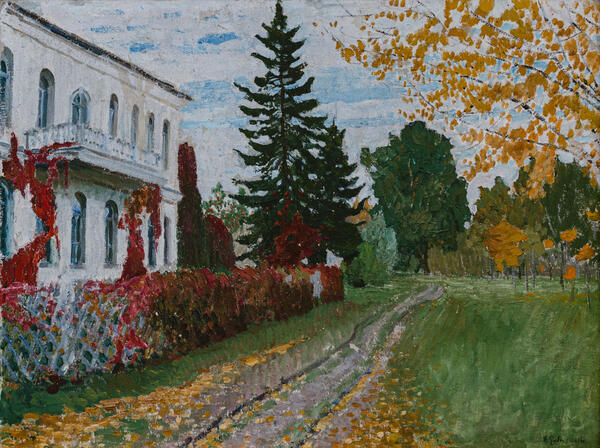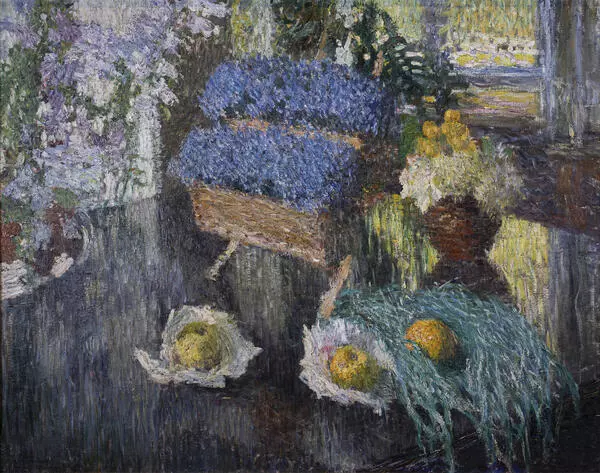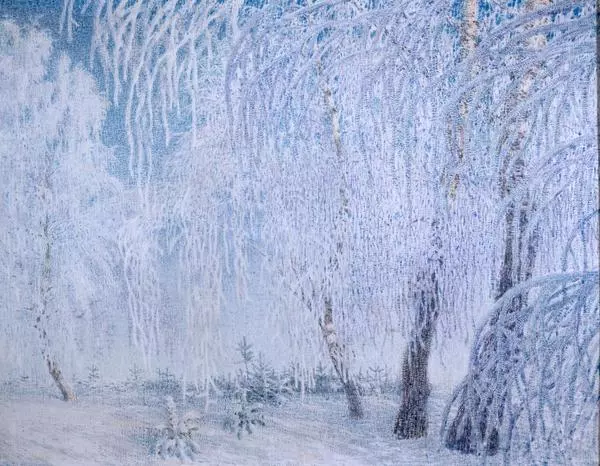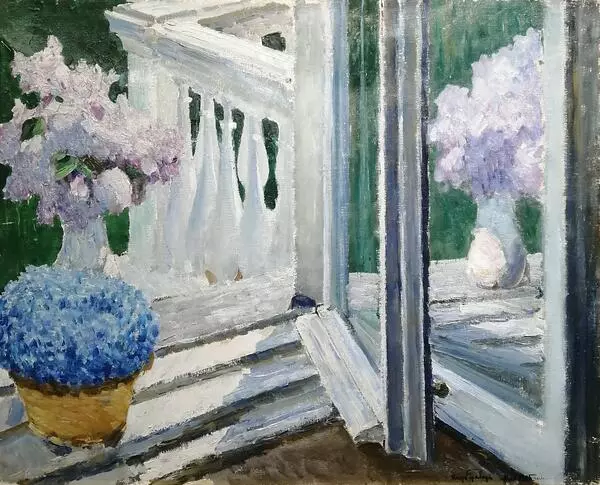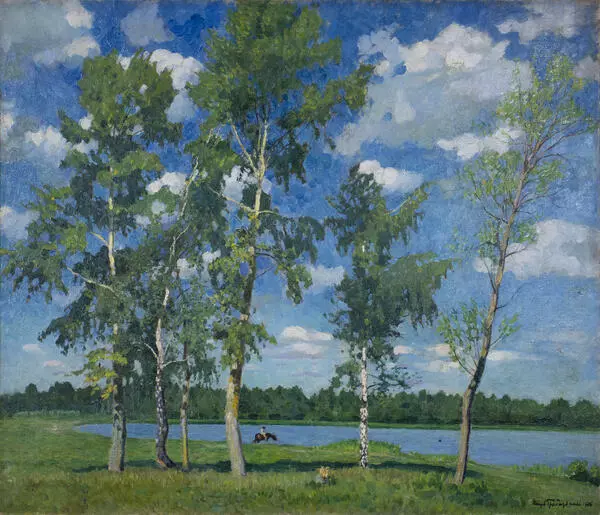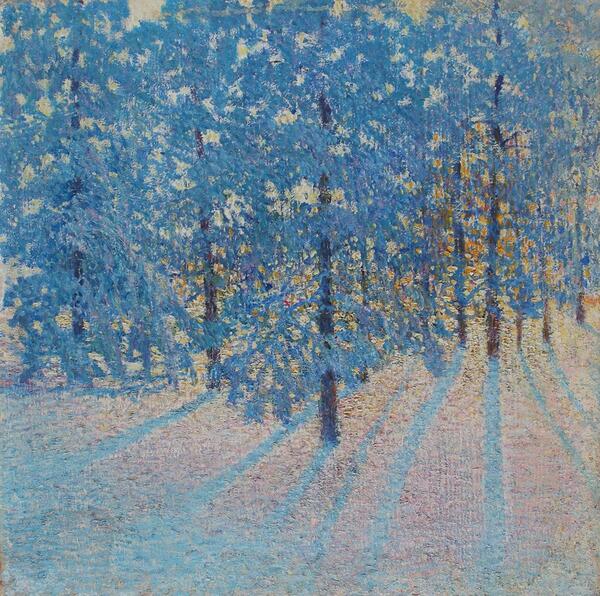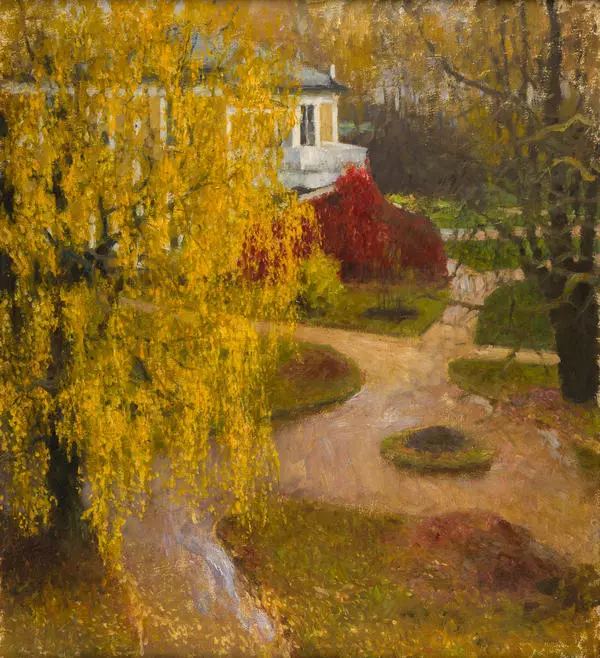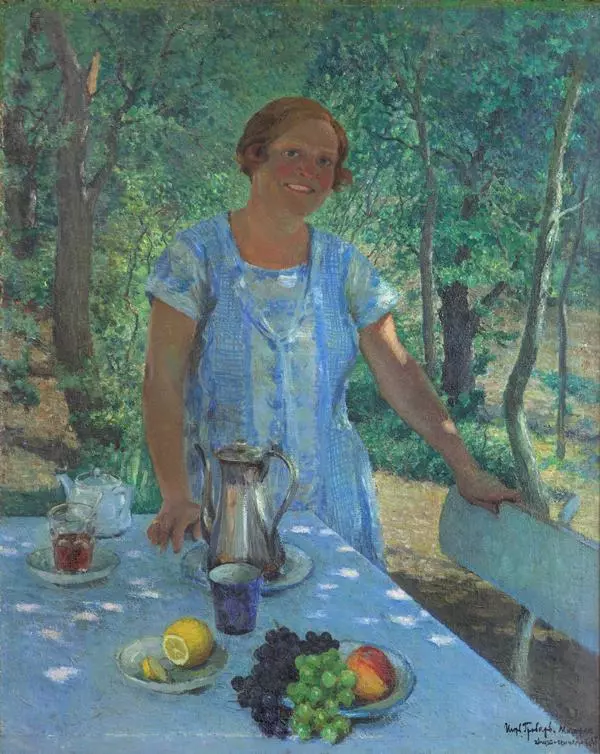Igor Grabar painted Apples in 1905. He called pictures like this one a still-life physical training, and did not treat them seriously. However, it is in his still-lifes that the painter’s personal style is revealed to the full extent. Apples is an example of Russian Impressionism, a style that Grabar used. He was in love with Russian life and his still-lifes are informed by that.
#3
Grabar I.E.
Apples
#2
#4
The artist was born in 1871 in Budapest, and when he was eight, he moved to Russia with his parents. He got interested in painting from his early age, and he said he could not remember [himself] not drawing. During his studies at the Imperial Lyceum in Moscow, young Grabar attended the Tretyakov Gallery every weekend.
He was admitted to the Academy of Arts, to Ilya Repin’s workshop. After graduation, Grabar traveled across Europe for five years, studying paintings of Western masters. In 1900, the artist came back to Russia. Beauties of Russian nature struck him deeply after being away for a long time. He started to paint, and produced multiple landscapes and still-lifes.
#5
By a twist of fate, in 1913, Grabar was appointed executive director of the Tretyakov Gallery, a place that he had visited so often as a child. In a letter to his mother, he confessed that he had agreed to work there in order to examine ‘paintings not from a distance, not through glasses, but up close, within a hair’s breadth, by touch, with an in-depth study of the technique, signature, all peculiarities’.
#6
Still-lifes with apples were a frequent subject for the painter. He was inspired by works of French impressionists that he had seen in Europe — for instance, Paul Cézanne’s. But Grabar infused the beauty and delight of Russian life in his own pieces.
#7
Paul Cézanne, Apples (1878). The Fitzwilliam Museum, UK.
#8
Grabar I.E., Turkestan Apples (1920). 1920 год. Perm State Art Gallery.
#9
Grabar painted Apples by small separate strokes, and created shapes of objects with his brush. The artist used only four colors: blue, red, yellow and white, but he produced an extensive palette of hues from them. The colors interact, with the blue crockery and yellow-green apples throwing their gleam on the white napkins. The red color of one apple is reiterated in the tablecloth ornament.
#10
In ‘Apples’, Grabar rendered the prettiness of every single thing. Fresh air and sunlight fill the picture space. The fruits lie on the table close to one another, which creates the feeling of the picture’s monolithic character. But, at the same time, all apples differ in shapes and colors, so every one of them individually makes an interesting object of study.
#11
“Apples” was in the collection of Mikhail Ryabushinsky, a patron of arts. Afterwards, it was transferred to the State Museum Fund, and in 1926, it was moved to the Radishchev Museum.
#12
A.N. Radishchev Saratov State Museum of Fine Arts
читать дальшескрыть
00:00
00:00
1x
Apples
Время создания
1905
Размер
88x72 cm
88×72 cm
88×72 cm
Техника
Oil on canvas
Коллекция
67
Открыть в приложении
Поделиться
